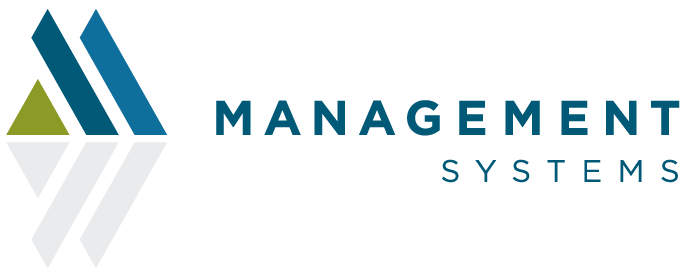Strategic Planning
Management Systems has developed a unique, proven methodology for strategic planning that has been used by hundreds of organizations to grow successfully and profitably over the long term. Our approach is fundamentally different from that of any other firm because it is built upon our Pyramid of Organizational Development™. As a result, our planning process focuses a company’s management/leadership team on planning not just for market and product/service growth (as most planning processes do), but also on planning for the development of the infrastructure (resources, operational systems, management systems, and organizational culture) needed to promote sustainable success. In a very real sense, our strategic planning process is a comprehensive “strategic organizational development planning process.”
Management Systems methodology for strategic planning consists of six steps, as shown below.
Steps in the Management Systems' Strategic Planning Process
Steps in Management Systems’ Strategic Planning Process
Step 1: Environmental Scan
- Identify Target Market (Customers) and strengths and limitations with respect to meeting market needs
- Identify the strengths and limitations of Key Competitors
- Identify Key Market Trends and the threats and opportunities they present
Step 2: Organizational Assessment
- Identify the company’s strengths and limitations at each level in the Pyramid of Organizational Development™
Step 3: Strategic Issue Resolution
- Identify and work to resolve specific strategic issues – identified through an analysis of information collected about the company’s environment and internal capabilities.
Step 4: Strategic Business Plan
This plan consists of the following components:
- Business Definition/Concept Statement: A one- to three- sentence statement that answers the question: “What business are we in?” It identifies the boundaries in which the business will operate and provides focus.
- Strategic Mission Statement: A broad statement of what an organization wants to achieve during the planning period (typically 3-5 years). The Strategic Mission Statement should include specific targets (e.g., revenue, market share, profitability, expansion, brand, etc.) against which performance can be assessed and a date (3-5 years out) by which these targets should be reached.
- Core Strategy: Defines how the organization will compete to “win the game” in its market. A Core Strategy (or what might be thought of as an organization’s “success formula”) should reflect the factors that differentiate or will differentiate the company from those with whom it competes for customers. These factors should be truly unique.
- Key Result Areas (KRAs): Areas of an organization’s operation in which performance has a critical impact on the achievement of the overall Strategic Mission. In a very real sense, Key Result Areas or “KRAs” are critical success factors.
- Objectives: Broad statements of what an organization wants to achieve in the long run (that is, by the Strategic Mission’s due date). In a sense, Objectives reflect the strategy that the organization is adopting with respect to each Key Result Area (KRA). Each KRA will have one or more Objectives.
- Goals: Specific, measurable results that an organization wants to or needs to attain by a specified due date to make progress in achieving a specific Objective. Goals should be SMART:
- Specific – Define a specific outcome
- Measurable – Targets against which progress can be assessed
- Accountable – someone on the team has responsibility for each Goal – and Actionable – action can be taken on the Goal
- Realistic – a high probability that the Goal can be achieved by its due date – and Results-Oriented – results to be achieved, versus action to be taken
- Time-Dated – Specific due date
Step 5: Budgeting
- Identifies how financial resources will be invested to help the organization achieve its plan.
- Involves translating the overall strategic plan into financial terms. It should be noted that the development of a strategic plan and budget is an iterative process – it may be that an organization will need to adjust its strategic plan, depending upon the financial resources available to support it.
- Budgeting is the responsibility of an organization’s “CFO.”
Step 6: Management Review
- A half- to full-day meeting each quarter during which management:
- Reviews progress being made against Goals.
- Celebrates successes with respect to achieving Goals.
- Identifies any problems or anticipated problems with respect to achieving Goals and develops plans to address these problems.
- Discusses and works to resolve any other issues that might affect organizational performance. These include new opportunities or threats presented by the market and changes to the company’s internal operations.
The Management Systems framework for strategic planning/strategic organizational development is further explained in several of our books and articles (see Publications) including Eric Flamholtz’s and Yvonne Randle’s book, Growing Pains.
